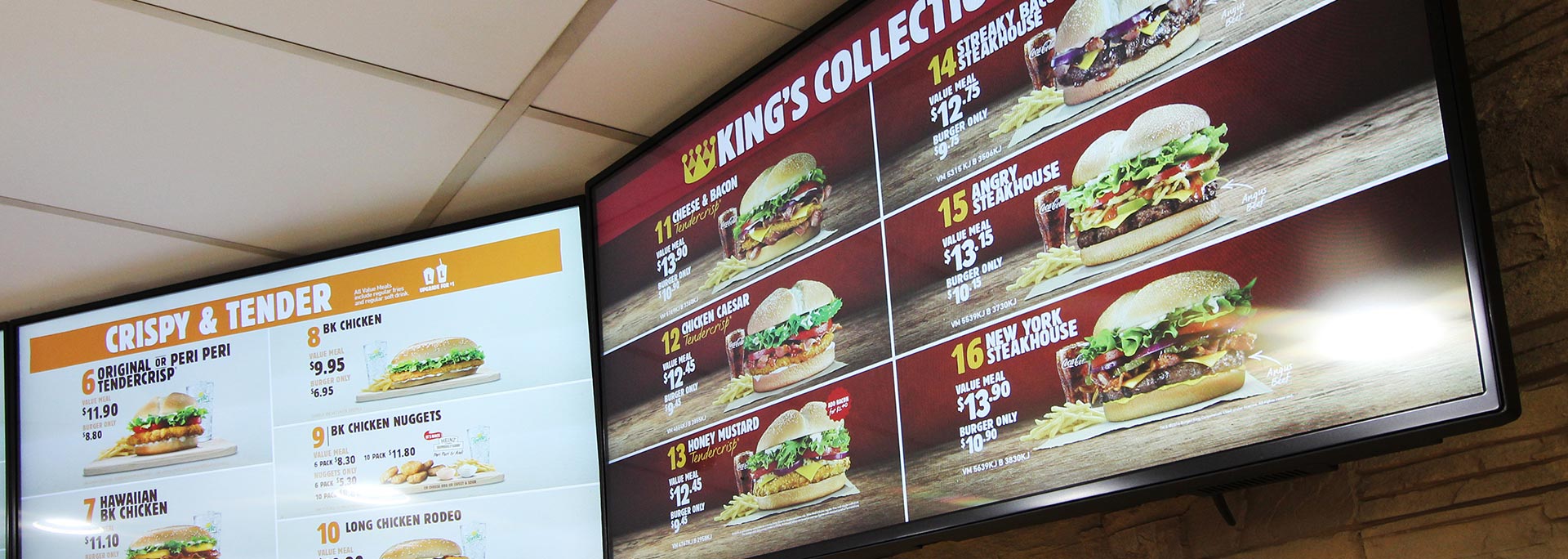Resources › Everything You Need To Know About System On Chip For Digital Signage Displays
Traditional digital signage has many parts to it – a screen, a media player and a bunch of wires. With the introduction of System on Chip for digital display in 2013, we’re pushing the boundaries of what digital signage can help your organisation achieve.
Think of this article as a beginner's guide to demystifying System on Chip for digital signage. We’ll explain what
it is
and why
many businesses are opting for SoC as their go-to over traditional digital signage.
What is System on Chip (SoC)?
System on Chip – also known as Smart displays, SoC displays, embedded computing displays, embedded smart displays, plug-and-play displays – is an integrated circuit that creates a microcomputer on a smaller PCB, which is then placed into a device. Simply put, it’s a built-in computer or electronic system that doesn’t require separate hardware.
System on Chip in digital signage
In digital signage, the System on Chip is embedded inside the digital signage display screen. Most notable vendors for SoC digital signage include LG and Samsung.
From small 13-inch displays to impressive video walls, SoC digital signage displays come all in different sizes, brightness levels, indoor and outdoor use, and operating hours – something to keep in mind if you want your digital signage screens to play round the clock.
SoC technology has changed how many industries view and use smart digital signage. Quick-service restaurants, manufacturers, healthcare, mining, construction – the list could go on!

Advantages of System on Chip displays
System on Chip digital signage is a smart option for many users. Here are several benefits or advantages to System on Chip digital signage
screens:
Reliability
One of the primary advantages how much more reliable your digital signage network will be. The physical media player is normally the primary
point of failure within a digital signage network. By removing the physical media player, the reliability of your network increases
significantly, reducing the need for replacement hardware and expensive onsite call out fees.
If you’re using smart digital signage displays from market-leading manufacturers such as LG, you’re almost guaranteed to get more reliable
and durable performance, and at great quality too.
Cost-effective
Samsung crunched the numbers and found that you can cut the total cost of ownership (TCO) by as much as 41% using SoC displays instead of digital signage screens with a separate media player. The math is simple: more hardware parts equal more points of failure; that’ll cost you time and money.
Aside from hardware costs, you’ll also have to consider installation costs. It’s estimated that a typical smart digital signage display installation takes 30 minutes faster than a traditional digital signage display because it just needs to be slot into place, plugged in and connected to the internet.
Then we have ongoing maintenance savings, which not many users realise. With a smart digital signage display, you can easily solve issues by switching the screen off and on again or just run a system update. Pretty easy and doesn’t normally involve calling in a technician! Unlike traditional digital signage which has more parts and typically requires a skilled technician to come in to fix it – if you’re using your digital signage screens to share life-saving messages you can’t afford to waste any time.
Built-in security
With SoC hardware such as LG's WebOS and Samsung's Tizen operating system, there's no need for remote control tools such as TeamViewer or VNC, which can introduce a security risk. With SoC, remote commands can be pushed down to the screens, as if you were standing in front of the screen with the TV remote.
Mess-free installations
Since you don’t need an external media player, you also have fewer cables which means easier cable management! Luckily, SoC display installations tend to tidier because there’s only one power cable for the display. No more wrestling and sorting out cables.
Environmental and energy efficient
With fewer hardware pieces, SoC displays consume less power and generate less wastage. That's one big tick in the box for your
Environmental, Social and Government (ESG) standard. By itself, it might not mean much, but it really starts to add up if you plan on doing
large-scale installations across the offices, warehouses, distribution centres and more.

The future of System on Chip digital signage displays
In 2013 the first SoC digital signage screens entered the market. Since then, SoC digital signage screens have come a long way with mightier chips to keep up with growing demand for more complex digital signage content. More than ever, SoC technology is here to stay and will continue to improve.
We know that external media players are often a headache for digital signage screen users - that's why we were the first company to develop SoC support for digital signage screens in New Zealand. With more than eight years of SoC experience and over 95% of our projects running SoC technology, we're very strong advocates for System on Chip for digital signage because it has removed the headaches of hardware support for our clients!
Now that you’ve got a better understanding of System on Chip for digital signage, why not check out how to choose the right digital signage software for your business?
